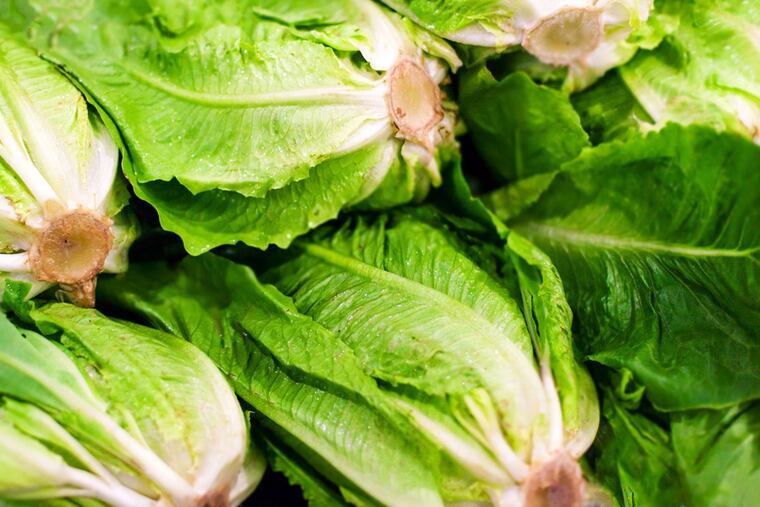Source of tainted lettuce still mystery as Pa. leads biggest E. coli outbreak since 2006
Tainted romaine lettuce has sickened 98 people in 22 states, making this the largest multistate E. coli outbreak since 2006, the U.S. Centers for Disease Control and Prevention said Friday.

The toll of illness tied to tainted romaine lettuce has grown to 98 people in 22 states, making this the largest multistate E. coli outbreak since 2006, the U.S. Centers for Disease Control and Prevention said Friday. Pennsylvania continues to have the most cases with 18.
E. coli is a type of bacteria that normally lives in the intestines of animals and people. Infection with certain toxin-producing strains can cause severe diarrhea, vomiting, fever, and in rare cases, kidney failure. The toxin binds to and kills cells lining the blood vessels of the gut and kidney.
During a teleconference Friday, investigators said they have made a little progress toward identifying the precise origins of the outbreak, which began in mid-March and is linked to lettuce grown in the Yuma, Ariz., region.
>>READ MORE: Why E. coli keeps getting into our lettuce
Eight confirmed cases caused by whole-head lettuce served at a jail in Nome, Alaska, have been traced to Harrison Farm in Yuma.
"Cattle wandered into a stream. Wild pigs also may have played a role," said Stic Harris, director of the Food and Drug Administration's outbreak-response network. He added that the farm is no longer shipping lettuce because the growing season has ended.
The rest of the nation's cases involved chopped romaine, sold in bags or salad mixes, that also came from the Yuma area. Dozens of farms, as well as distribution and packaging operations, are still being scrutinized, an arduous process that requires collecting samples and testing for the implicated strain of E. coli.
"Our advice remains that people should not be eating any type of romaine, and retailers and restaurants should not be selling it, unless they are certain it didn't come from the Yuma region," said Matthew Wise of CDC's outbreak-response team.
Because of the lag between when a sickness occurs and the report reaches the CDC, the case count may continue to grow.
No one has died, but 46 people have been hospitalized, including nine with kidney damage. That's a higher hospitalization rate than the 30 percent usually seen with E. coli.
In 2006, another particularly virulent strain of E. coli from fresh spinach sickened nearly 200 people and hospitalized half of them. The produce industry took steps to tighten safety rules for farms growing greens, and Congress in 2011 passed a law that is gradually phasing in tougher standards for farm irrigation, equipment cleaning, and other potential contamination routes.
Even so, the CDC has linked an average of 11 outbreaks a year to leafy greens. The popularity of convenience salad mixes — many containing romaine — and the fact that the food is not processed in a way that would kill the bacteria are fundamental factors.
"It's not something that's cooked," Harris said. "You're eating the raw product grown in Mother Earth."
Last week, the first lawsuit of the outbreak was filed by Seattle lawyer William Marler on behalf of a Flemington, N.J., woman who blamed Panera Bread and food supplier Freshway Foods for her illness.